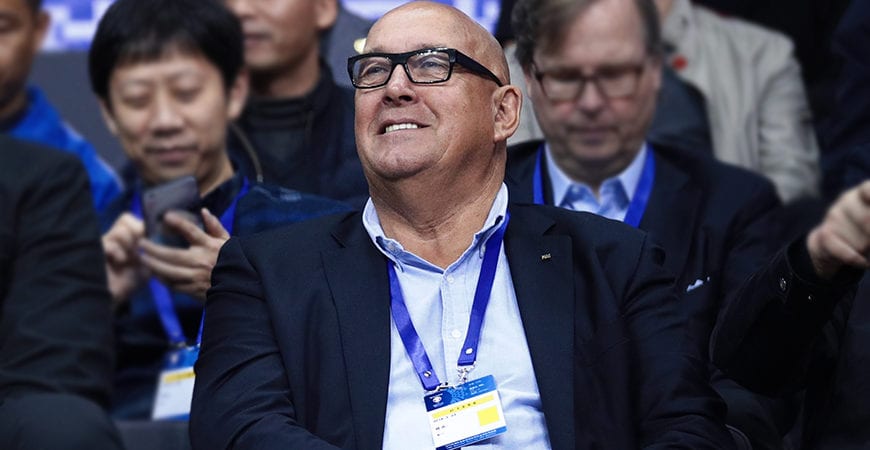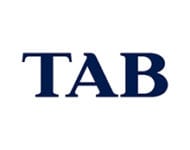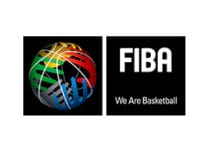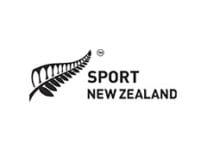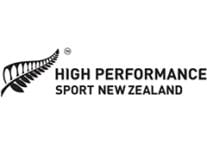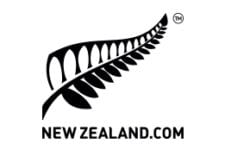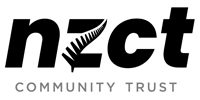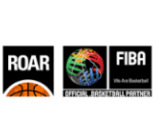The new Vice President of FIBA, one of the biggest sporting bodies in the world, is New Zealander and Canterbury Rams’ alumni Burton Shipley.
This promotion within the highest order of FIBA’s top table comes after a resoundingly successful FIBA World Cup. Over 16 days in September this year, 80 games were played throughout eight cities in China, in front of 800,000 spectators. The event was shown in 190 territories through more than 70 broadcasters around the world to a viewership of over three billion people.
The event saw 32 teams line up with over 50 NBA stars representing their countries including players like NBA MVP Giannis Antetokounmpo (Greece / Milwaukee Bucks), Nikola Vucevic (Montenegro / Orlando Magic), Rui Hachimura (Japan / Washington Wizards), Nikola Jokic (Serbia / Denver Nuggets) – all of which the Tall Blacks played in the lead up to, or during, the event.
The point? The 2019 FIBA World Cup was massive. The judgement of its success would fall directly on the people that made up the Local Organising Committee (LOC). From all reports, and surely to the admiration of FIBA’s top table, the event was widely applauded. As the LOC’s Chairman, it was ultimately Shipley responsible for this event. With success comes reward and, for Shipley, FIBA bestowed a vice presidency.
“It’s not something that I expected, but it’s a huge honour,” says Shipley, answering questions over the phone from his home in Auckland.
“Yes, perhaps a part of it is due to my work on the World Cup and the amount of time and effort the team put into making it a success.
“We overcame many challenges and I think the key was to realise the cultural differences that we needed to manage. China is a big country and I think people forget that China has been a very successful nation for a very long time. They do business their way and they do it totally differently from the western way of doing business. I always tried to get the team to think about that,” says Shipley.
“In the end, I was delighted with what eventuated from the team’s work. The images of the event that beamed around the world on the television were stunning. I was very proud of what we produced.”
Having lost count of the number of times he has travelled to China, Shipley says he flew out of New Zealand 17 times in 2017 and about that same about in 2018, which is an insight into the amount of time he spends in airplanes and hotels. But that international connection, especially in China, is in the family. Shipley’s son, Ben, ran a marketing business in Shanghai for five years. Their daughter Anna, lived in Beijing for two years as Marketing and PR Manager for Nokia. Shipley’s wife and former Prime Minister of New Zealand, Dame Jenny Shipley, also spends a great deal of time there. He says each of them have come to learn the fabric of Chinese society. Persistence and patience appear to be essential traits to achieve in China.
“We’ve been fortunate to be in China quite a lot over the last 25 years and that helped me during the World Cup project. I think the most important thing I’ve learnt is the importance of instilling confidence in those you are working with. That’s the thing that I was probably most proud of through this event. I established a rapport with our Chinese colleagues as we were working together. They knew that if I said I’d do something, I would do it. They learnt that I was interested in what was the best for basketball, but also that I wanted China to look good as well.”
BASKETBALL FOR GOOD
As Vice President of FIBA, Shipley will turn his mind to the organisations three key strategies for this next four years: empower national federations; develop the women’s game, and enlarge the FIBA family by drawing more people to the game. Yet the work Shipley speaks most fondly of is another role he’s just been appointed to within FIBA – a Board Member of the International Basketball Foundation. One of the Foundation’s missions is to use basketball to foster good, and support social and humanitarian development programmes.
“We can use basketball as a mechanism to help the community and society grow. We’ve already achieved a lot with some of the work we’ve done in the Pacific. For example, we’ve run projects to help kids in Fiji, using basketball to help those with non-communicable diseases. We’ve run projects to help women build confidence and power to speak up about family violence. We’ve helped raise awareness in places like Papua New Guinea for nutrition. We’ve helped local police integrate better with their communities through basketball so they become friends instead of enemies. So you can actually use sports to change the structure of some of the harder societies.”
Another case of using sport to foster better societies is Fiji, where Shipley says the Fiji Basketball Federation has increased player registrations from 800 to 16,000, thanks in part to FIBA’s community work. Ultimately, that seems to be the motivating drive behind Shipley’s endless travel schedule and workload.
FIBA Oceania has provided an ideal trial for FIBA worldwide. The FIBA Oceania team of five staff has run just over 90 different projects in the Oceania Zone in each of the last four years.
“I view my work with FIBA more as an opportunity to give something back to a sport that I love. I really do enjoy it. It’s a fantastic sport and I absolutely adored playing it. I was never going to be an NBA superstar, but I absolutely loved playing at the levels that I did. It’s nice to be ultimately involved in something where we can give something back to the sport and make a difference,” says Shipley.
THE FUTURE – AFRICA, ASIA, 3×3
Being the second most popular sport around the world behind football, the game of basketball still has great potential, but also faces great challenges. With 213 national federations under the FIBA umbrella, not many of those have fulltime employees. Many are operating in third-world economies and face great societal challenges. Consequently, FIBA’s remit is peppered with complexities and challenges.
Shipley says FIBA is in good shape financially and has made big changes including its global administrative structure, plus the construction of new competitions with more fan appeal for global audiences like the FIBA World Cup Qualifiers that were so successful around the world, including New Zealand. FIBA attracted powerful partners like Nike, WANDA Group and Tencent, an example of making big gains in a short space of time. And Shipley says FIBA are looking to developing nations for their next big leap.
“We know, in terms of growth, Europe and the U.S. will stay about the same – both very successful. The growth will come from Asia and parts of Africa. With time and help, both will do incredibly well. It’s probably another generation away from getting there, but we know the opportunity is there.”
FIBA has been working alongside the NBA and running programmes in those continents, investing heavily in the upskilling of coaches, player development, assisting through advocacy and running events in nations throughout those areas. A recent example of the fruits of that labour is Mali, the silver medallists that stunned many teams at the FIBA Under 19 World Cup in Greece this year.
Other drivers for FIBA are the use of the 3×3 format. The single-hoop version of basketball is flourishing as more nations, including New Zealand, continue to ply more resources and players into 3×3. In 2018 FIBA saw a 63% rise in the number of their official 3×3 events, which are hosted by federations around the world. The 3×3 social media channels ticked over two million followers, their 900 hours of livestream footage of their events attracted 230 million views. The newly developed professional 3×3 circuit saw 32 events around the world in one year. But Shipley says, for him, the exciting part is seeing those developing nations entering global events for the first time, because those nations can still find four talented players and afford to enter them in the 3×3 competitions. The five aside game needs more people and resource, so competing internationally if more difficult.
“We held 3×3 at the Pacific Games for the first time in Samoa this year. For the first time ever, the Marshall Islands competed in a FIBA competition. They surprised everyone coming fourth in both the men’s and women’s events. That’s an example of how these countries can suddenly take part and start growing the game at home with the appeal of a player pathway that leads to big internationals events.”
VIEWS ON NEW ZEALAND AND THE TALL BLACKS
Through his various positions in FIBA, Shipley says he can no longer view himself as a New Zealander in basketball circles. He says he must be seen to be impartial.
“One of the best pieces of advice I received, just after I was elected as President of Oceania at FIBA, was to immediately resign from everything I was involved in basketball in New Zealand. When at FIBA, you are no longer a New Zealander, you come from Oceania.
“To remain impartial, I try not to be too involved with the local federations, either Australia or New Zealand. I keep telling them that I’m always there if they want me to do something, but they need to ask. I can’t be proactive for them.”
Yet get Shipley talking about the Tall Blacks and that impartiality seems to drift for a moment, revealing his patriotism.
“My highlight at the World Cup, I have to say, was watching the Tall Blacks beat Turkey for the first time ever. Turkey is a powerhouse of basketball and most people don’t probably realise how strong they are. New Zealand inched them with one point. The frustration is seeing very little celebration of that in the New Zealand media.”
Shipley has a point. Everyone who followed the World Cup would have seen the Tall Blacks as a hot topic. The Tall Blacks were one of only three teams to have all their pool games shown live on CCTV5 – China’s biggest free to air sports station. CCTV also sent a feature reporter to tell the story of the New Zealand team’s haka and culture, on their style of basketball and how they challenged, and in some cases beat, some big nations. Yet that interest didn’t flourish as much back home in New Zealand.
“The Basketball World Cup in 2019 will be the most watched World Cup of any sport in the world this year. You wouldn’t know that by looking at the New Zealand media. More than three billion people watch the World Cup worldwide. I don’t think many businesses in New Zealand realise the opportunity that sits there.
“I’ve been somewhat amazed that one of our companies didn’t want to use the Tall Blacks as a promotional tool in China. The number of people that saw them play and admire them is amazing. They were a big attraction through their style of play and the haka, which fans love.”
Yet Shipley believes the future looks bright for New Zealand basketball when considering the brand’s ever-increasing reach into Asia. The next FIBA World Cup will be held in three nations: Japan, Philippines and Indonesia. Shipley says the commercial potential there remains strong and he believes New Zealand’s connection with China will only get stronger.
“I’ve been working quite a lot with Yao Ming, who is the Chair of the China Basketball Association. China was beaten and put out of the World Cup in the first round. That would have hurt. I sent him some encouraging words and he replied, ‘We’re fine, but we need to play Australia and New Zealand more often.’ So there are some huge opportunities that will continue to develop for New Zealand.”
Basketball New Zealand has used its brands’ reach into China well, attracting China-based sponsors like MBO, Security Placements, PEAK and Ganten. Those sponsors have added to other commercial backers like Sky Sport, Aon, Schick to see the most commercial backing the Federation has ever received. That said, the budget is still tight.
ADVICE FOR FEDERATIONS
So what advice does Mr Shipley have for the New Zealand Federation?
“I think both Australia and New Zealand need to set a big goal to work towards.
“Australia, with their players and the structure that they have, should have a goal of winning a World Cup within the next eight years. They actually had a chance this year and didn’t quite do it. And I’d love to see New Zealand come out and get a medal within 12 years. They need to plan that and base their strategic decisions on it, because I think it would force them to do things they otherwise would not.
“The other thing that I would keep going and adopt more, is trying to develop the leagues and the number of players playing in it. I’ve been a little concerned in the [Australian] NBL that the Breakers play in. The number of imports is getting too high and the number of local players is reducing because of it. It won’t impact for a while but, in time, you’ll see a change in the status of play. I think New Zealand and Australia need to be careful about that.
“New Zealand also needs to be taking the need to confront our sporting politicians. We don’t get high participation in sport without heroes and if you don’t fund the top end of the competition, how are you going to have heroes? Sure, Steven Adams came along, but we need more than that. We need to become bigger than what we are.
“I’m frustrated by the fact that we keep being talked about as having the highest participation rates in secondary schools and yet that doesn’t seem to result in high performance funding.”
FUNDING
This subject deserves its own article, but to give context to Shipley’s frustration, the New Zealand government’s high-performance funding model has been debated a lot within basketball circles in recent years. A simple description of the high-performance funding model is it highly values Olympic medals. In globally popular sports like volleyball, football and basketball, the sports don’t easily fit into that model.
While basketball is well funded at a participation level for have-a-go programmes, coaching programmes, funding associations to run Kiwi Hoops or the newly developed Girls Got Game programme, elite Kiwi basketball teams are generally dismissed.
At the World Cup this year, the Tall Blacks proved they can match it with the best at the World Cup with a win over Turkey, Japan, and Montenegro, and they gave Greece and Brazil a real scare. Yet that level of excellence on the world stage is not enough to attract the attention of high performance funders and that, says Shipley, needs looking at.
That said, at the time of writing this article, the New Zealand Tall Ferns received a major vote of confidence in the form of event funders: Major Events and ATEED backed Basketball New Zealand to host a FIBA Olympic Qualifying event in Auckland this month. Yet elite women’s basketball was again dismissed by High Performance Sport New Zealand (HPSNZ) in 2018. The men’s team got a look in with $150,000 for 2018. In comparison to the top funded ‘Tier 1’ sports that target Olympic medals: Rowing $5.1m; Cycling $4.4m; Yachting $3.8m; Athletics $2.7m. Canoe Racing ($1.7m) has recently been added to the mix too. Add other areas of HPSNZ’s financial support that many athletes and support staff receive within those top tier sports and that figure would likely double. Interestingly, further down the list, hockey is separated into men’s ($700k) and women’s ($1.4m) categories. Basketball is not broken into those categories – otherwise it would read basketball men $150k, basketball women $0. (Read the full HPSNZ Core Investment here – see page 6).
WOMEN’S BASKETBALL
The women’s game is a targeted area of growth for FIBA and clearly on Shipley’s mind.
“FIBA worldwide, needs to make the women’s competition appealing, and have better pathways. We need to try and get it to where the men’s World Cup is now. That’s going to be difficult and has some challenges, but that’s the goal.
“A while ago I met a rower who was a mutual family friend. She gave me a big telling off as to why there wasn’t a better pathway for young women in basketball. She said she would far sooner be playing basketball than rowing, but there was nowhere for her to go in basketball. That’s talent that our women’s programme loses and that is partly because funders need to do better.”
Shipley says FIBA and other sporting bodies have a long way to go to lift women’s sport, but FIBA are doing something about it.
“I think in this term you’ll see a lot of ideas floated about the women’s game, and then I think in the next term you’ll see the actual traction. I look at FIFA’s work in this area. If you read their plan for women’s football, it’s very aggressive – of course they’ve got enough cash to do it – but there’s lessons that we can gain from their work.”
WHAT’S ON THE CARDS FOR BURTON?
Shipley says he will have a think about what his plans are, but for now there is work to be done.
“I’ve just turned 67 and I don’t feel that much older than I did when I was in my 40s. I think there will be a time to stop, but most of my ambitions at the moment are focused on the Sport for Good opportunities that I’ve talked about and I’d love to see us do better in that.
“That time to slow down and travel less, and spend more time back in New Zealand will come soon enough. For now though, I’m determined to get on and help make a difference while I can.”
More: Interview with Burton Shipley in February 2018: https://nz.basketball/feature-burton-shipley-the-kiwi-behind-the-2019-fiba-world-cup/

